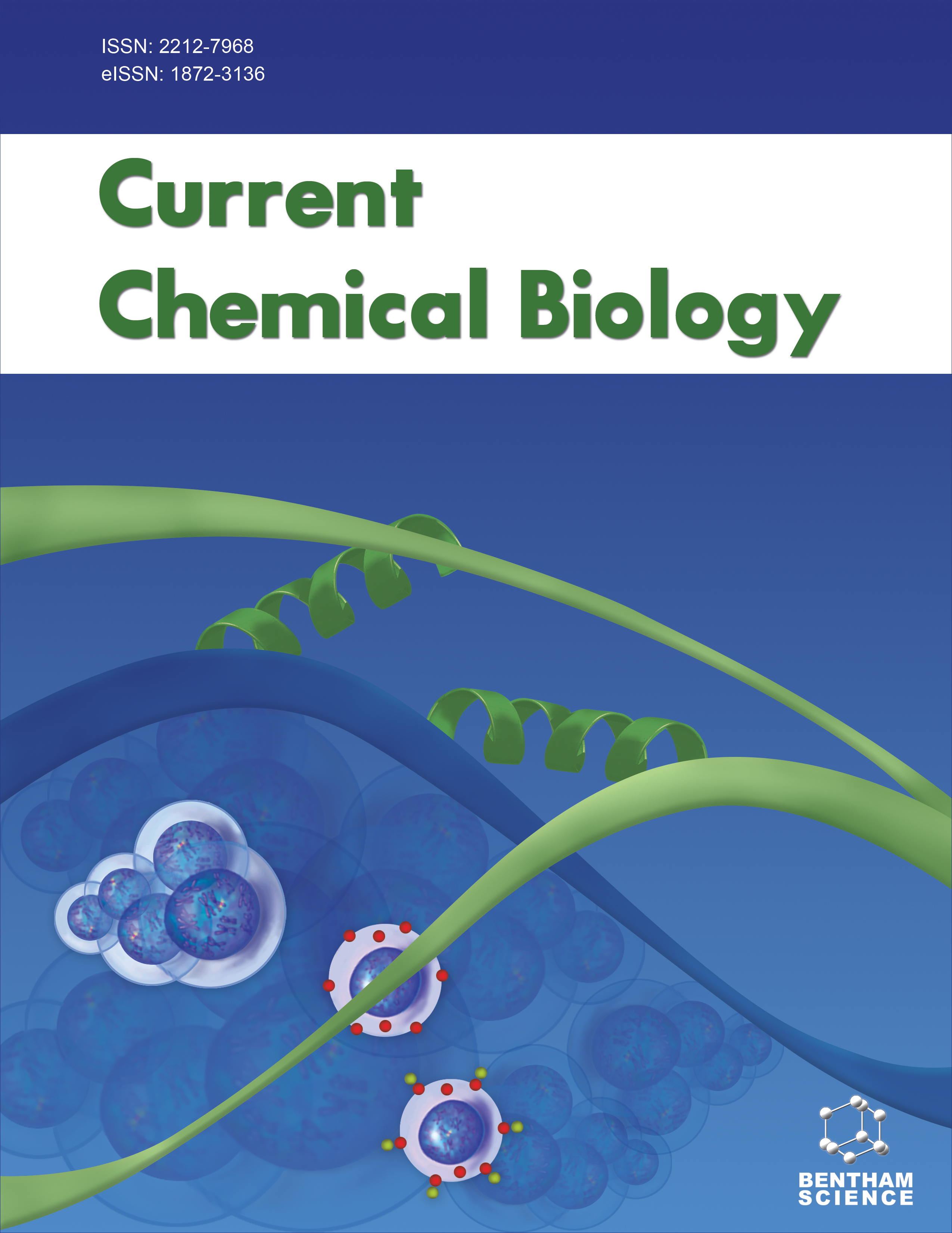- Home
- A-Z Publications
- Current Chemical Biology
- Previous Issues
- Volume 4, Issue 3, 2010
Current Chemical Biology - Volume 4, Issue 3, 2010
Volume 4, Issue 3, 2010
-
-
Editorial [Hot topic: Infectious Disorders and Pathogens: Approaches from Diagnosis and Detection to Therapy and Sterilization (Guest Editor: Akikazu Sakudo)]
More LessRecently, several methods for infectious disorders have been developed. These include diagnostic methods on the basis of enhanced detection of pathogens, and therapy on the basis of effectively preventing infection or the proliferation of pathogens. Vaccination strategies for pathogens also contribute to reducing the incidence of infection. Accumulated knowledge on pathogens and disease-specific proteins such as receptors Read More
-
-
-
Discovery of a Small Molecule Inhibitor of the Interaction Between HIV-1 Proteins and Cellular Cofactors: A Novel Candidate Anti-HIV-1 Drug
More LessAuthors: Guangai Xue and Yoko AidaCurrent therapeutic strategies to inhibit the replication of human immunodeficiency virus type 1 (HIV-1) use a combination of drugs targeted at the viral reverse transcriptase, protease and integrase enzymes. The clinical advantages of this combination therapy are considerable, although the emergence of drug-resistant viral strains still presents a challenge. Import of the HIV-1 viral pre-integration complex (PIC) into the nucle Read More
-
-
-
PMCA. A Decade of In Vitro Prion Replication
More LessAuthors: Natalia Fernandez-Borges and Joaquin CastillaProtein Misfolding Cyclic Amplification (PMCA) is a 10 years old in vitro technique based on a cyclic process leading to accelerate prion replication in vitro. The technique has been modified and adapted several times since its inception: new ideas, more sophisticated equipments and new applications have been essential elements for its upgrading. PMCA has proved to be an efficient method mimicking in vitro some of the f Read More
-
-
-
The Role of Apoptosis in Influenza Virus Pathogenesis and the Mechanisms Involved in Anti-Influenza Therapies
More LessAuthors: Tomo Daidoji, Kunihiro Kaihatsu and Takaaki NakayaBecause pandemic influenza virus infection can result in large-scale human death and have a major economic impact, influenza virus is one of the most important microbial pathogens. To control influenza virus, both clarification of the mechanisms by which the virus causes disease and the development of effective drugs and other therapies based on these mechanisms are needed. Virus infection often induces cell death, w Read More
-
-
-
Mucosal Immune Regulation and Vaccines for Helicobacter-associated Gastritis
More LessAuthors: Yasuhisa Ano, Hirokazu Tsubone, Akikazu Sakudo and Daisuke FujiwaraHelicobacter pylori (H. pylori) infects the stomach of more than 50% of humans and causes chronic gastritis in most infected individuals. H. pylori has developed mechanisms to survive the harsh gastric environment. In the host infected with H. pylori, various immune cells infiltrate into the infected gastric mucosa and then severe inflammatory responses occur. This severe inflammation, however, is not able to clear H. pylor Read More
-
-
-
Antigen Discovery for Serological Diagnosis of Visceral Leishmaniasis
More LessAuthors: Yasuyuki Goto and Steven G. ReedVisceral leishmaniasis (VL) is the most severe form of leishmaniasis and results from parasitic infection by certain species of the protozoan genus Leishmania. Because VL is often fatal unless treated, rapid and accurate diagnosis of the disease is indispensable for case control. Currently, the gold standard diagnosis of VL is detection of parasites in a spleen or bone marrow aspirate. Because this method is invasive, time-consu Read More
-
-
-
Advances in the Development of Virus-Like Particles as Tools in Medicine and Nanoscience
More LessVirus-like particles (VLPs) are viral coats formed by the self-assembly of the components of viruses excluding their genetic material. These particles may be used as vectors to transport molecules chemically attached on the VLP surface, or as vessels for the systemic delivery of pharmacologically important molecules as drugs, siRNAs, genes, mRNAs, magnetic nanoparticles, quantum dots and other medical-imaging aids. Herein w Read More
-
-
-
Therapeutic Potentials of Recently Identified PLD Inhibitors
More LessThe signaling enzyme Phospholipase D (PLD) has been implicated in numerous cell biological processes, including Ras activation, cell spreading, stress fiber formation, chemotaxis, and vesicular trafficking during neurotransmitter and hormonal release. These observations have been mostly obtained from cell culture experiments using a primary alcohol to inhibit PLD activity or by modulating endogenous expression levels of t Read More
-
-
-
Role of Nitric Oxide Signaling Pathways in Brain Injuries
More LessNitric oxide (NO) is involved in many physiological and pathological brain processes. NO is probably the smallest and most versatile bioactive molecule identified. NO signaling in excitable tissues requires rapid and controlled delivery of NO to specific cellular targets. This tight control of NO signaling is largely regulated at the level of its biosynthesis. NO production might lead either to toxicity or to neuroprotection depending Read More
-
Volumes & issues
Most Read This Month
Article
content/journals/ccb
Journal
10
5
false
en


